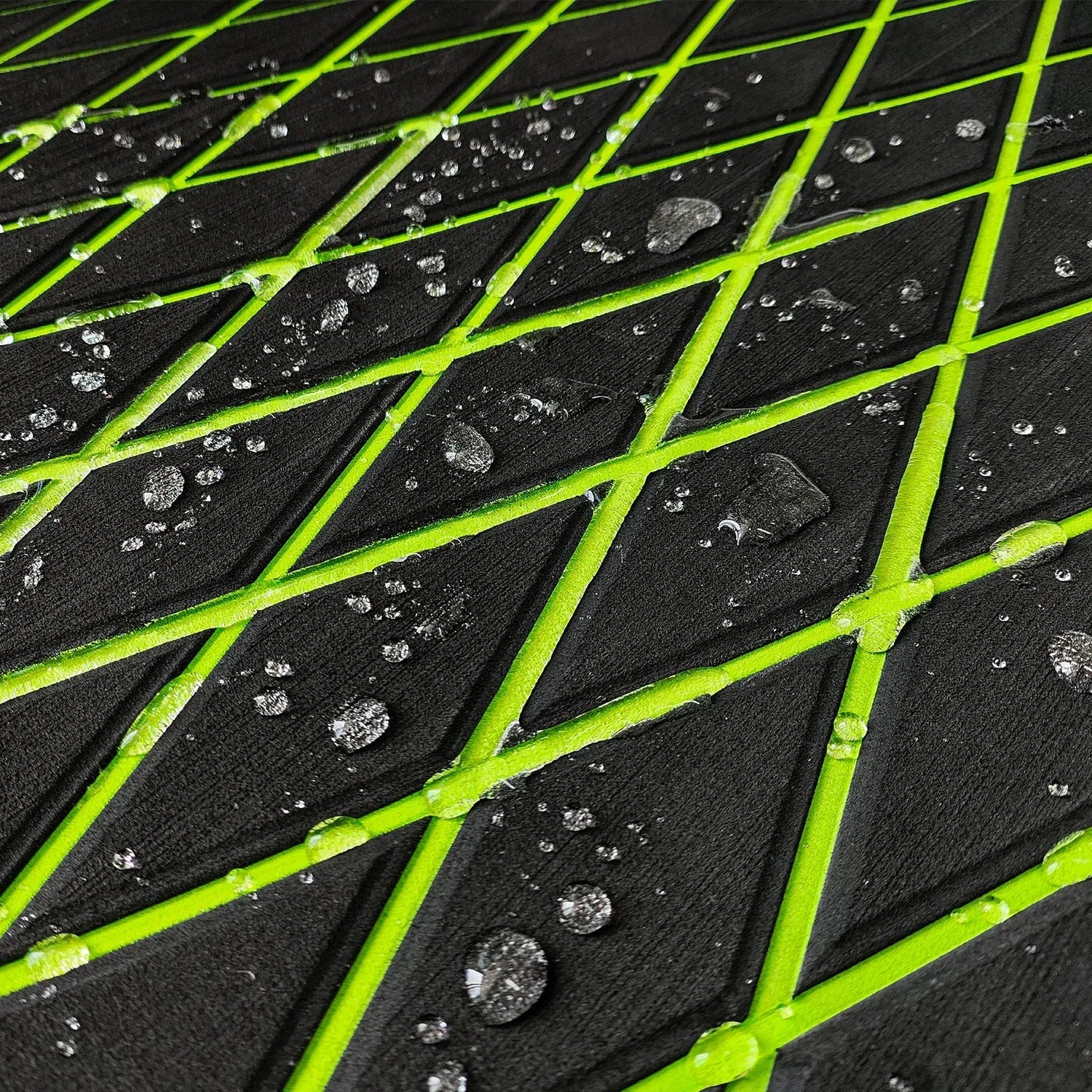
How Long Does EVA Foam Boat Decking Last? A Comparative Guide to EVA vs. PVC
When upgrading your boat’s decking, durability and longevity are top priorities. Two popular materials—EVA foam and PVC—often come into the spotlight, but their performance and lifespan vary significantly. In this guide, we’ll explore how long EVA foam boat flooring lasts compared to PVC, their pros and cons, and why Hzkaicun’s EVA foam boat flooring stands out as the superior choice for marine enthusiasts.
1. Lifespan: EVA vs. PVC
EVA Foam Boat Decking:
Ethylene-vinyl acetate (EVA) is renowned for its resilience in marine environments. With proper installation and minimal maintenance, EVA foam boat flooring typically lasts 10–15 years or more. Its molecular structure resists UV radiation, saltwater corrosion, and extreme temperature fluctuations, ensuring long-term performance without cracking or warping.
PVC Decking:
Polyvinyl chloride (PVC) is cost-effective and widely used, but its lifespan is shorter—usually 5–8 years under similar conditions. PVC degrades faster under prolonged UV exposure, becoming brittle and prone to discoloration. While it’s waterproof, repeated stress and temperature changes can lead to surface cracks, reducing its functional lifespan.
2. Key Advantages and Drawbacks
EVA Foam
-
Pros:
-
Superior Durability: High resistance to abrasion, tears, and chemical corrosion.
-
Shock Absorption: Provides cushioning for comfort during long voyages.
-
Low Maintenance: No need for sealing or frequent repairs.
-
Eco-Friendly: Non-toxic and recyclable, aligning with sustainable boating practices.
-
-
Cons:
-
Higher upfront cost compared to PVC (offset by longer lifespan).
-
PVC
-
Pros:
-
Affordability: Budget-friendly for short-term solutions.
-
Lightweight: Easy to handle and install.
-
-
Cons:
-
Limited UV Resistance: Requires UV-protective coatings to delay degradation.
-
Environmental Concerns: Contains additives that may release toxins over time.
-
Difficult to Remove: Adhesive-based installations often damage decks during replacement.
-
3. Removability and Installation Flexibility
One critical factor for boat owners is whether decking can be easily replaced.
EVA Foam:
EVA foam boat flooring is often designed with interlocking panels or non-permanent adhesives, allowing for straightforward removal without damaging the underlying surface. This modularity makes upgrades or repairs hassle-free.
PVC:
Most PVC decking relies on strong adhesives, which can leave residue or damage the deck when removed. This complicates replacements and increases long-term costs.
4. Why Choose Hzkaicun’s EVA Foam Boat Flooring?
At Hzkaicun, we specialize in marine-grade EVA foam boat flooring engineered for longevity and performance. Our products combine:
-
Military-Grade Durability: Tested in extreme marine conditions to ensure 15+ years of service.
-
Customizable Designs: Available in non-slip textures and UV-resistant colors to match your boat’s aesthetics.
-
Easy Installation: Interlocking panels for a DIY-friendly setup—no professional help needed.
Conclusion: Invest in Longevity with EVA
While PVC might seem appealing for its lower cost, EVA foam boat flooring offers unmatched durability, comfort, and ease of maintenance. For boaters seeking a permanent, worry-free solution, Hzkaicun’s EVA foam boat flooring is the smart investment.
Ready to upgrade? Explore our EVA foam boat flooring collection today and enjoy a decade of smooth sailing!

